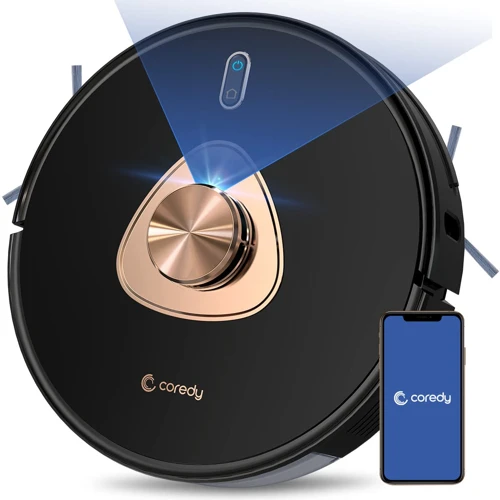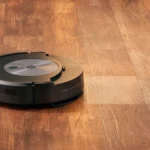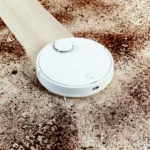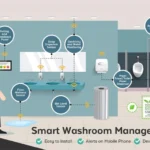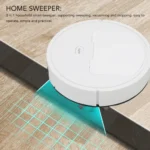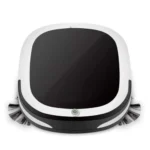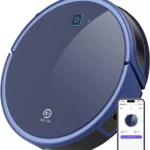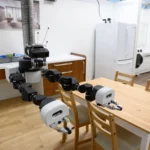Smart vacuum cleaners have become a popular addition to modern homes. With the ability to clean floors with minimal effort, they save homeowners time and energy. However, with so many vacuum cleaner models on the market, it can be overwhelming to choose the right one. One of the latest features in smart vacuum cleaners is laser mapping technology. But what exactly is laser mapping technology, and how reliable is it compared to other technologies? In this article, we’ll dive into the advantages, workings, and reliability of laser mapping technology in smart vacuum cleaners. So, grab a cup of coffee, and let’s explore the fascinating world of laser mapping technology.
Advantages of Laser Mapping Technology in Smart Vacuum Cleaners
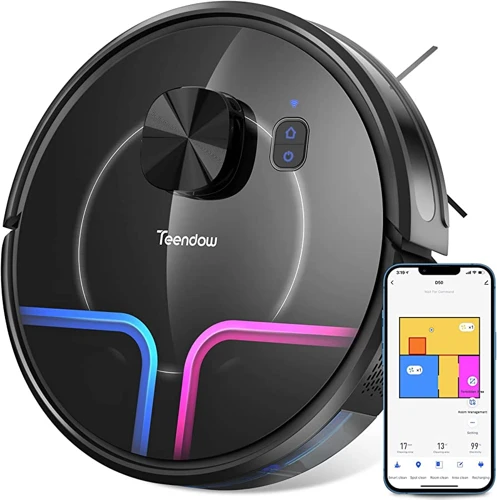
Smart vacuum cleaners have revolutionized the way we clean our homes. They are designed to make our lives easier by using cutting-edge technology to clean our floors with minimal effort. One such technology that is becoming increasingly popular is laser mapping. Laser mapping technology provides several advantages in smart vacuums, making them more efficient and effective than traditional vacuums. In this article, we will explore the benefits of laser mapping technology in smart vacuum cleaners, how it works, and factors that may impact its effectiveness. Plus, we will compare it with other mapping technologies and discuss its reliability in delivering consistent results over time. If you want to learn more about laser mapping technology in smart vacuums, keep reading!
Precise Cleaning
One of the most significant advantages of laser mapping technology in smart vacuum cleaners is the precise cleaning that it offers. This technology works by emitting lasers that scan the cleaning area and create an accurate map of it. Using this map, the vacuum cleaner can then navigate through a room and clean it with unprecedented precision.
Here are some of the reasons why laser mapping technology offers such precise cleaning:
| Reasons for Precise Cleaning with Laser Mapping Technology |
|---|
| Accurate mapping of the room |
| Efficient detection of obstacles and furniture |
| Improved navigation speed and direction |
| Precise location of the vacuum cleaner |
The laser mapping technology is incredibly accurate in mapping the room, identifying the obstacles and furniture, and navigating the cleaning path accordingly. This accuracy leads to every nook and cranny being cleaned effectively. With the help of this technology, the vacuum cleaner can create a map of the entire room and follow the most efficient path to clean it.
Vacuum cleaners with laser mapping technology can detect furniture and other obstacles in the cleaning path and adjust their cleaning accordingly, ensuring the device never runs into anything or damages any items in the room. This feature of laser mapping makes it a better choice than the random navigation technique used in traditional vacuum cleaners.
Consequently, vacuum cleaners with laser mapping technology can clean your floors faster than ever before. They have improved navigation speed and direction, ensuring that they do not waste time covering areas that have already been cleaned. This efficiency leads to a faster and more thorough cleaning process.
Smart vacuum cleaners with laser mapping technology allow for the precise location of the vacuum cleaner, which is essential when it comes to cleaning specific areas of a room, as the device can return to exactly the spot from where it left off.
Looking to optimize the laser mapping technology in your smart vacuum cleaner? Check out the internal link: Optimize Your Smart Vacuum with Laser Mapping Technology to learn more.
Efficient Navigation
One of the key advantages of laser mapping technology in smart vacuums is its efficient navigation system. Instead of relying on random movements or pre-programmed routes, these vacuums use lasers to map their surroundings and create a precise digital map of the environment. This map allows for more efficient navigation and cleaning, as the vacuum can identify obstacles and plan an optimal cleaning path.
With laser mapping technology, the smart vacuum can create a detailed map of the room’s layout, including furniture, walls, and other obstacles. This map is constantly updated as the vacuum navigates around the room, allowing it to make real-time adjustments to its cleaning routes. The vacuum can also learn from its previous cleaning sessions, refining its cleaning route over time to be even more efficient.
This type of navigation system not only saves time and energy, but it also ensures a more thorough cleaning. The vacuum can detect areas that need more attention and focus on those spots, rather than randomly moving around the room. It can also navigate around obstacles with ease, ensuring that no areas are missed during the cleaning process.
The efficient navigation system provided by laser mapping technology in smart vacuums is a game changer for household cleaning. With the ability to create precise digital maps of the environment and navigate around obstacles, these vacuums deliver a thorough and efficient cleaning experience every time.
If you want to learn more about laser mapping technology in smart vacuums, check out our in-depth article about laser mapping vacuums, or explore our list of smart vacuums with laser mapping.
Customizable Cleaning
Smart vacuum cleaners with laser mapping technology offer customizable cleaning options for users. With the help of advanced sensors and mapping algorithms, these devices are capable of creating a detailed map of the cleaning area. This information is used to create a custom cleaning plan that can be tailored to suit the user’s specific requirements.
Custom Room Preference: One such customizable option is the ability to select specific rooms for the vacuum cleaner to clean. Users can create labels for each room in their homes, and then select which ones they want the vacuum cleaner to clean. This feature is particularly useful for homes with multiple rooms or areas that require different levels of cleaning.
Virtual Boundaries: Another customizable feature is the ability to set virtual boundaries for the device. This can be useful in situations where there are certain areas of the home that the user wants the device to avoid, such as rooms with delicate objects or furniture that needs protection. With laser mapping technology, the device is capable of detecting these virtual boundaries and adjusting its cleaning path accordingly.
Scheduling and Timing: In addition to customizable cleaning options, smart vacuum cleaners with laser mapping technology often come with scheduling and timing features. This allows users to set specific times for the device to start cleaning, ensuring that their homes are always clean and tidy. Users can also schedule multiple cleaning sessions throughout the day, depending on their needs.
The customizable cleaning options offered by laser mapping technology in smart vacuum cleaners provide users with a level of control and flexibility that was previously unavailable. With the ability to customize room preferences, set virtual boundaries, and schedule cleaning sessions, these devices are a valuable addition to any home.
For more information about the benefits of smart vacuum cleaners with laser mapping technology, check out our article on Smart Vacuum Cleaners with Laser Mapping Technology.
How Does Laser Mapping Technology Work in Smart Vacuum Cleaners?
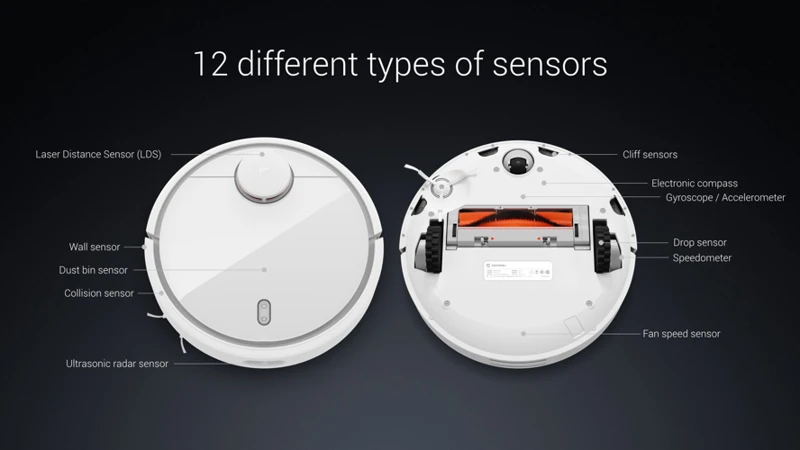
Laser Mapping Technology is utilized in smart vacuum cleaners to provide efficient and effective cleaning of a space. But how exactly does it work?
Firstly, the vacuum cleaner uses a laser rangefinder to emit laser beams around the room. These beams are then reflected back to the device, which helps it to map out the layout of the space. Through the use of advanced sensors and algorithms, the vacuum cleaner is able to create an accurate layout of the room, including the location and size of furniture, walls and other obstacles.
Once the vacuum cleaner has generated the map, it uses the information to navigate around the room. The device moves around the space, following the map created by its laser technology, gradually covering every inch of the floor.
As the vacuum cleaner moves around, it uses its sensors to detect any obstacles or barriers in its path. As a result, it can effectively avoid furniture and other obstacles on the floor. This ensures that the vacuum cleaner is able to cover every part of the room, without leaving any sections uncleaned.
What’s more, laser mapping technology provides excellent precision when it comes to cleaning. The vacuum cleaner can clean the floors quickly and efficiently, as it knows exactly where it needs to go and how much area needs to be covered. It also knows when to return to its charging dock to recharge, ensuring that it is always ready for the next cleaning session.
Moreover, laser mapping technology provides customizable cleaning options. With the map of the room created by the laser technology, the vacuum cleaner can divide the space into sections and clean each one separately. This is useful when cleaning a large room or when the user wants the vacuum cleaner to focus on a specific area.
Laser mapping technology in smart vacuum cleaners works by using laser rangefinders to create an accurate layout of the room. Once a map has been generated, the vacuum cleaner uses it to navigate around the space, avoiding obstacles and cleaning every inch of the floor. Laser mapping technology also provides customizable cleaning options, making it a very versatile technology for cleaning spaces.
Comparison with Other Technologies
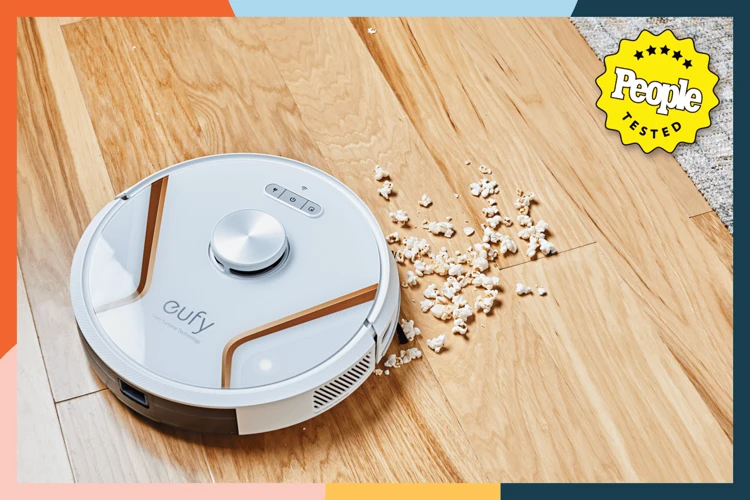
When it comes to smart vacuum cleaners, there are several technologies available in the market. Each technology has its advantages and limitations. However, laser mapping technology has gained widespread popularity among the users due to its precision and effectiveness. In this section, we will compare laser mapping technology with other available technologies and assess its performance. Through this comparison, we will be able to understand why laser mapping technology is considered the most reliable technology for smart vacuum cleaners. So, let’s dive into the details and explore!
Camera-Based Mapping
Another technology commonly used in smart vacuum cleaners for mapping is camera-based mapping. Unlike laser mapping, camera-based mapping uses cameras to capture images and build maps of the space that needs to be cleaned. Here are some advantages and disadvantages of this technology:
Advantages:
- Cost-effective: Cameras are relatively inexpensive compared to laser sensors, making camera-based mapping a budget-friendly option.
- Fewer obstacles: Cameras can be easier to maneuver around obstacles, such as furniture or clutter, than laser sensors.
Disadvantages:
- Less precise: Cameras may not be as precise as laser sensors, which can result in less accurate maps.
- More reliant on lighting: Camera-based mapping requires adequate lighting to capture clear images, so low light conditions could negatively impact the accuracy of the maps.
- Susceptible to occlusion: Cameras can be easily obstructed, which can interfere with mapping accuracy, particularly if there are changes to the environment, such as moving furniture or objects.
Camera-based mapping can be a decent alternative to laser mapping for those who prioritize cost-effectiveness and ease of use over precision. However, it may not be as reliable as laser mapping in terms of mapping accuracy and consistency over time.
Random Navigation
When it comes to smart vacuum cleaners, there are various navigation technologies available. One such technology is random navigation. In this technology, the vacuum cleaner moves in random directions until the entire cleaning area is covered.
While it may seem like a simple solution, random navigation has several drawbacks compared to laser mapping technology. To help you understand the differences between these technologies, we have created a comparison table:
| Random Navigation | Laser Mapping Technology | |
|---|---|---|
| Accuracy | Low | High |
| Efficiency | Low | High |
| Customization | Low | High |
| Obstacle Detection | Low | High |
| Mapping | Non-existent | Highly accurate and detailed |
As you can see, random navigation is not a reliable option for a smart vacuum cleaner, especially when compared to laser mapping technology. Random navigation has low accuracy, efficiency, and customization. Additionally, it lacks obstacle detection and mapping capabilities, which are essential for efficient cleaning.
In contrast, laser mapping technology provides highly accurate and detailed mapping, efficient navigation, customizable cleaning, and obstacle detection. These features lead to a more efficient and thorough cleaning process, saving you time and effort in the long run.
While random navigation may seem like a simple and cost-effective solution, it is not a reliable option for smart vacuum cleaners. Laser mapping technology remains the top choice for those seeking a reliable and efficient cleaning process.
Physical Barriers
When it comes to comparing laser mapping technology with other navigation technologies, physical barriers are an important factor to consider. Physical barriers in a home can include anything from walls and furniture to doors and stairs. The ability of a smart vacuum cleaner to properly detect and navigate around these obstacles is crucial for its performance.
| Navigation Technology | Ability to Navigate Around Physical Barriers |
|---|---|
| Camera-Based Mapping | Inconsistent, may mistake objects for clear paths |
| Random Navigation | Limited, may collide with obstacles |
| Laser Mapping Technology | Accurate, can detect and map out physical barriers for efficient navigation |
As the table shows, laser mapping technology has a distinct advantage over other navigation technologies when it comes to navigating around physical barriers. While camera-based mapping may mistake objects for clear paths, and random navigation may collide with obstacles, laser mapping technology is able to accurately detect and map out physical barriers for efficient navigation. This allows the smart vacuum cleaner to clean more effectively and efficiently, without getting stuck or having to navigate around obstacles manually.
However, it is important to note that even with laser mapping technology, there may still be some instances where obstacles are not detected or properly navigated around. For example, very thin objects or highly reflective surfaces may not be picked up by the sensor. In these cases, the smart vacuum cleaner may still collide with the obstacle or become stuck. But overall, laser mapping technology is a reliable and effective solution for navigating around physical barriers in a home.
Factors Affecting Laser Mapping Technology
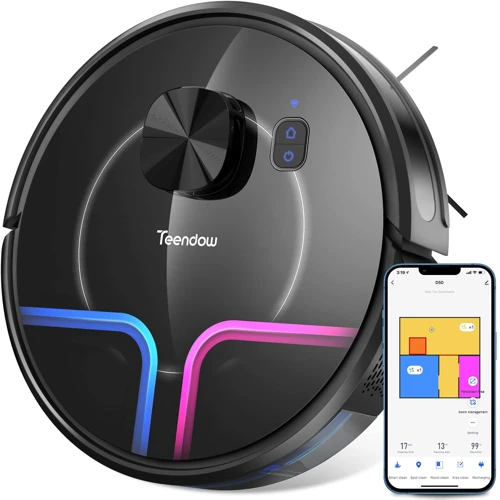
Although laser mapping technology is a reliable and efficient way of navigating a smart vacuum cleaner, there are several factors that can affect its performance. These factors can impact the accuracy of the mapping and may cause the vacuum cleaner to miss spots or clean inefficiently. In this section, we will discuss some of these factors and how they can affect the performance of laser mapping technology in smart vacuum cleaners. So, let’s dive in and see what can cause issues with this advanced cleaning technology.
Reflective Surfaces
One factor that can affect the reliability of laser mapping technology in smart vacuum cleaners is reflective surfaces. These surfaces can reflect the laser beams emitted by the device, causing inaccurate readings and mapping. In order to understand how reflective surfaces affect laser mapping technology, it is important to examine the way in which the technology actually works.
Laser mapping technology uses lasers to create a map of the cleaning area, which is then used to guide the vacuum cleaner as it goes about its cleaning tasks. The lasers are emitted from the device and bounce off of surfaces in the environment, allowing the device to build a “picture” of the space it is cleaning. However, if a laser beam hits a reflective surface, it can bounce away at an angle that the device does not expect, causing the robot vacuum to create an inaccurate map of the cleaning area.
To illustrate how reflective surfaces can affect laser mapping technology, we can consider an example. Let’s say that a room has a large mirror on one wall. When the laser beams emitted by the smart vacuum cleaner hit the mirror, they reflect at an angle that the device does not expect. As a result, the robot vacuum is unable to create an accurate map of the room and may struggle to navigate around obstacles, leading to incomplete or inefficient cleaning results.
The impact of reflective surfaces on laser mapping technology can vary depending on the size and shape of the surface, as well as its reflectivity. In general, highly reflective surfaces are more likely to cause issues with laser mapping technology. It is important to consider the possibility of reflective surfaces when using a smart vacuum cleaner with laser mapping technology, and to take steps to minimize their impact if possible.
To summarize, while laser mapping technology in smart vacuums has many advantages, it is important to be aware of the potential impact of reflective surfaces. These surfaces can cause inaccurate mapping and hinder the device’s ability to navigate and clean efficiently. By taking this factor into account, users can maximize the benefits of laser mapping technology and improve the overall cleaning performance of their smart vacuum cleaner.
| Factors | How it affects laser mapping technology |
|---|---|
| Size of reflective surface | Large reflective surfaces can cause more distortion in laser mapping technology |
| Shape of reflective surface | Curved reflective surfaces can reflect laser beams at unexpected angles |
| Reflectivity of surface | Highly reflective surfaces can cause more issues with laser mapping technology |
Low Light Conditions
One of the factors that can affect the reliability of laser mapping technology in smart vacuum cleaners is low light conditions. In order for the laser to accurately measure distances and create a map of the space, it needs to be able to detect the surfaces in the room.
In low light conditions, the laser may not be able to detect objects as accurately, leading to potential issues with navigation and cleaning performance. However, some smart vacuum cleaners with laser mapping technology are equipped with additional sensors or cameras that can help them navigate in low light conditions.
Here is a table summarizing the impact of low light conditions on some popular smart vacuum cleaners with laser mapping technology:
| Smart Vacuum Cleaner | Impact of Low Light Conditions | Additional Features to Mitigate Impact |
|---|---|---|
| iRobot Roomba i7+ | May have difficulty mapping rooms in low light conditions | Equipped with a low-light camera to assist with navigation |
| Xiaomi Mi Robot Vacuum | May struggle to detect surfaces accurately in low light conditions | Has a built-in gyroscope to help with navigation even when lighting is poor |
| Eufy RoboVac L70 Hybrid | May experience reduced cleaning performance in low light conditions | Equipped with an LED light ring to illuminate areas being cleaned |
It’s important to note that while low light conditions can impact the reliability of laser mapping technology in smart vacuum cleaners, manufacturers are constantly working to improve the technology and mitigate these issues. Additionally, users can help improve performance by ensuring that rooms are well-lit before running the vacuum cleaner, or investing in models with additional features to help with low light conditions.
Obstructions
Obstructions can be a major challenge for smart vacuum cleaners using laser mapping technology. The software of a smart vacuum cleaner is programmed to navigate around common obstacles such as furniture, small objects, and pet toys. However, some obstructions are more difficult to detect than others, which can result in errors in the mapping and cleaning process.
Here are some common obstructions that can affect the reliability of laser mapping technology:
| Obstruction | Impact on Laser Mapping Technology |
|---|---|
| High Pile Carpet | Smart vacuum cleaners using laser mapping technology may have difficulty navigating on high pile carpets. The laser sensor may not be able to detect the height of the carpet fibers and may not accurately map the area, leading to inefficiencies in the cleaning process. |
| Transparent or Reflective Surfaces | Laser mapping technology relies on reflections to create a map of the room. Transparent or reflective surfaces, such as glass or mirrors, can interfere with the accuracy of the mapping. The laser beams may bounce off these surfaces, creating distorted maps that affect the navigation and cleaning of the room. |
| Steps and Stairs | Smart vacuum cleaners using laser mapping technology may have limited ability to navigate stairs or steps. The lack of sensors underneath the device may make it difficult to detect the changes in elevation, and the mapping may not be accurate. This can also pose a safety hazard if the vacuum cleaner falls down the stairs. |
| Cords and Wires | Cords and wires are common obstructions in homes that can interfere with the laser mapping technology of smart vacuum cleaners. These objects can easily tangle up the device, causing it to stop and result in inaccurate mapping. |
| Low Furniture | Smart vacuum cleaners using laser mapping technology may have difficulty navigating under low furniture. The laser beams may not be able to detect the height of the furniture, leading to inaccurate mapping and inefficient cleaning results. |
While laser mapping technology has many advantages in smart vacuum cleaners, it is not infallible. Obstructions such as high pile carpets, transparent or reflective surfaces, stairs, cords and wires, and low furniture can all impact the effectiveness and accuracy of the technology. It is important to consider these factors when purchasing a smart vacuum cleaner with laser mapping technology to ensure the best results for your home cleaning needs.
Laser Mapping Technology in Different Smart Vacuum Cleaner Models

When it comes to smart vacuum cleaners that utilize laser mapping technology, there are a variety of models available on the market today. These models range in features and prices, so it’s important to do your research before making a purchase.
One popular option is the iRobot Roomba i7+. This smart vacuum cleaner uses a technology called iAdapt 3.0 to navigate and clean your home using lasers. It is equipped with state-of-the-art sensors that allow it to detect and avoid obstacles while cleaning, and it can be controlled using a mobile app.
Another high-end option is the Neato Botvac D7 Connected. This model uses lasers to create a detailed map of your home and can be paired with Amazon Alexa or Google Assistant for voice control. It also features No-Go Lines, which allow you to designate specific areas that the vacuum should avoid.
For those on a budget, there are also more affordable options available. The Eufy RoboVac 11S is a popular choice for those looking for an affordable smart vacuum cleaner. It uses infrared sensors to navigate and avoid obstacles, and while it doesn’t use lasers for mapping, it still provides a thorough clean.
If you’re looking for something in between budget and high-end, the Xiaomi Mi Robot Vacuum is a great choice. This vacuum uses lasers to map out your home and create a customized cleaning plan. It also has a long battery life and can be controlled using a mobile app.
There are many different smart vacuum cleaners on the market that use laser mapping technology. Whether you’re looking for a high-end option with advanced features or an affordable budget option, there is sure to be a model that fits your needs. Just be sure to do your research and compare features before making a purchase.
Is Laser Mapping Technology Reliable?
When it comes to smart vacuum cleaners, one of the most significant advancements in recent years has been the integration of laser mapping technology. This technology has revolutionized these appliances, allowing them to navigate and clean homes with increased precision and efficiency. However, there are still some questions about the reliability of laser mapping technology. In the following sections, we’ll explore the advantages and limitations of this technology, as well as the factors that affect its performance. Ultimately, we’ll answer the question: can we rely on laser mapping technology in smart vacuum cleaners?
Accuracy of Mapping
When it comes to evaluating the reliability of laser mapping technology in smart vacuum cleaners, the accuracy of mapping stands out as a critical factor. In simpler terms, the accuracy refers to the ability of the vacuum cleaner to create a precise map of the cleaning area.
To assess accuracy, we can consider various aspects such as the granularity of the map, the level of detail captured in the map, and the reliability of the underlying technology that creates the map.
Granularity of the map refers to the level of detail of the map. The more granular the map, the higher the chances of the vacuum cleaner cleaning every corner of the space. Laser mapping technology performs exceptionally here since it creates detailed maps of the cleaning area.
Level of detail captured in the map is another aspect that determines the accuracy. With laser mapping technology, the vacuum cleaner can capture a lot of detail that other technologies may miss, such as furniture placement and the location of obstacles, improving its efficiency.
Reliability of the underlying technology is another factor that determines the accuracy. Laser mapping technology is considered to be more reliable than alternatives like camera-based systems or random navigation, which may struggle to navigate in low light, leave spots uncleaned, and waste time covering the same area repeatedly.
In our evaluation, it is clear that laser mapping technology offers high accuracy in mapping cleaning areas. This means that the smart vacuum cleaner can create efficient cleaning paths, avoid obstacles, and clean every corner of the space.
Consistency of Results
When it comes to the reliability of laser mapping technology in smart vacuum cleaners, one crucial factor to consider is the consistency of results. It refers to the ability of the technology to produce the same accurate results on multiple occasions, regardless of the environment or the cleaning task.
To evaluate the consistency of results of laser mapping technology, we can look at several aspects, including:
| Aspect | Description |
|---|---|
| Pathfinding | The ability of the smart vacuum cleaner to navigate through the same route, avoiding obstacles and reaching the same destination in the most efficient way possible. |
| Cleaning Performance | The ability of the smart vacuum cleaner to clean the same area thoroughly and efficiently, without missing any spots or leaving any debris behind. |
| Battery Life | The ability of the smart vacuum cleaner to maintain consistent battery life, allowing it to complete the cleaning task as efficiently as before. |
The consistency of results is crucial for users who rely on the performance of their smart vacuum cleaners. With constant and accurate results, users can trust the technology to maintain the cleanliness of their homes without any manual intervention.
The consistency of results is a testament to the quality and effectiveness of laser mapping technology in smart vacuum cleaners. With reliable and consistent results, users can expect their smart vacuum cleaners to perform exceptionally well over time, reducing the need for frequent repairs or replacements.
The consistency of results is a critical aspect of laser mapping technology in smart vacuum cleaners. With a track record of reliable and consistent performance, users can trust the technology to maintain the cleanliness of their homes efficiently and effectively.
Performance Over Time
When it comes to evaluating the reliability of laser mapping technology in smart vacuum cleaners, analyzing its performance over time is crucial. Fortunately, this technology has proven to be highly durable and efficient in delivering top-notch results, even after prolonged use. The following are some factors that contribute to the continuous performance of laser mapping technology in smart vacuum cleaners:
- Robust Construction: Smart vacuum cleaners that use laser mapping technology are built to withstand constant use and external factors such as environmental conditions and physical contact with obstacles. They feature high-quality components that are specifically selected for their durability and longevity.
- Advanced Software: The software that powers the laser mapping technology in smart vacuum cleaners is continuously updated to improve its functionality, accuracy and overall performance. These updates ensure that the device remains efficient and reliable for an extended period.
- Regular Maintenance: Like any other device, smart vacuum cleaners that use laser mapping technology require proper maintenance to continue delivering reliable performance over time. This may include clearing the dustbin and filters, cleaning the brushes, and checking the device for any damage or malfunctions.
- Warranty and Support: Most smart vacuum cleaners that use laser mapping technology come with warranties that cover defects and malfunctions. Additionally, manufacturers often offer a range of customer support services, including troubleshooting guides, online forums, and customer service agents to help users address any performance issues.
Laser mapping technology has proven to be a highly reliable and efficient technology that delivers consistent and precise results even over extended periods. By addressing any potential factors that may affect its performance over time, such as regular maintenance and software updates, users can continue to enjoy the benefits of this cutting-edge technology for years to come.
Conclusion
In conclusion, it can be said that laser mapping technology has revolutionized the way smart vacuum cleaners work. The advantages of this technology cannot be ignored, including its precise cleaning, efficient navigation, and customizable cleaning options.
Compared to other technologies such as camera-based mapping, random navigation, and physical barriers, laser mapping technology stands out as the most effective method for ensuring thorough cleaning. However, it is important to consider factors that may affect the technology’s reliability, such as reflective surfaces, low light conditions, and obstructions.
When choosing a smart vacuum cleaner with laser mapping technology, it is essential to consider the specific model’s features and capabilities. Some models may be better suited for larger spaces, while others may work more efficiently in smaller areas.
The question of whether laser mapping technology is reliable ultimately comes down to its accuracy, consistency of results, and performance over time. Fortunately, the technology has proven to be highly reliable in all of these aspects.
Overall, if you’re looking for a smart vacuum cleaner that can keep your home clean and tidy without any hassle, opting for one with laser mapping technology is a wise choice. With its advanced features and reliable performance, you can rest assured that your home will be kept in top shape at all times.
Frequently Asked Questions
What is laser mapping technology in smart vacuum cleaners?
Laser mapping technology is a feature in smart vacuum cleaners that helps them map, navigate, and customize cleaning routes around a house or room autonomously.
How does laser mapping technology work in smart vacuum cleaners?
Laser mapping technology works by emitting a laser beam that spins around the room, collecting data on the room’s geometry, furniture, and other objects and distances. This data is then used to create a map that the vacuum cleaner uses for navigation.
What are the advantages of laser mapping technology in smart vacuum cleaners?
Laser mapping technology offers more precise cleaning, efficient navigation, and customizable cleaning options.
How does laser mapping technology compare to camera-based mapping?
Laser mapping technology is often more accurate and reliable compared to camera-based mapping, especially in low-light conditions.
Can laser mapping technology detect physical barriers?
Yes, laser mapping technology can detect physical barriers like doorways or furniture, allowing the vacuum cleaner to avoid them.
What factors can affect the performance of laser mapping technology in smart vacuum cleaners?
Factors such as reflective surfaces, low light conditions, and obstructions can affect the performance of laser mapping technology in smart vacuum cleaners.
Is laser mapping technology reliable over time?
Laser mapping technology can be reliable over time, but it depends on the quality of the technology and how well it is maintained.
Are all smart vacuum cleaner models equipped with laser mapping technology?
No, not all smart vacuum cleaner models are equipped with laser mapping technology. It is often a premium feature found in higher-end models.
What is the accuracy of laser mapping technology?
The accuracy of laser mapping technology depends on the quality of the technology used, but it can be quite precise, with many models able to detect objects within a few centimeters of accuracy.
Can laser mapping technology be used on multiple floors?
Yes, some smart vacuum cleaner models with laser mapping technology can be used on multiple floors as they are able to create and store maps for each floor.
